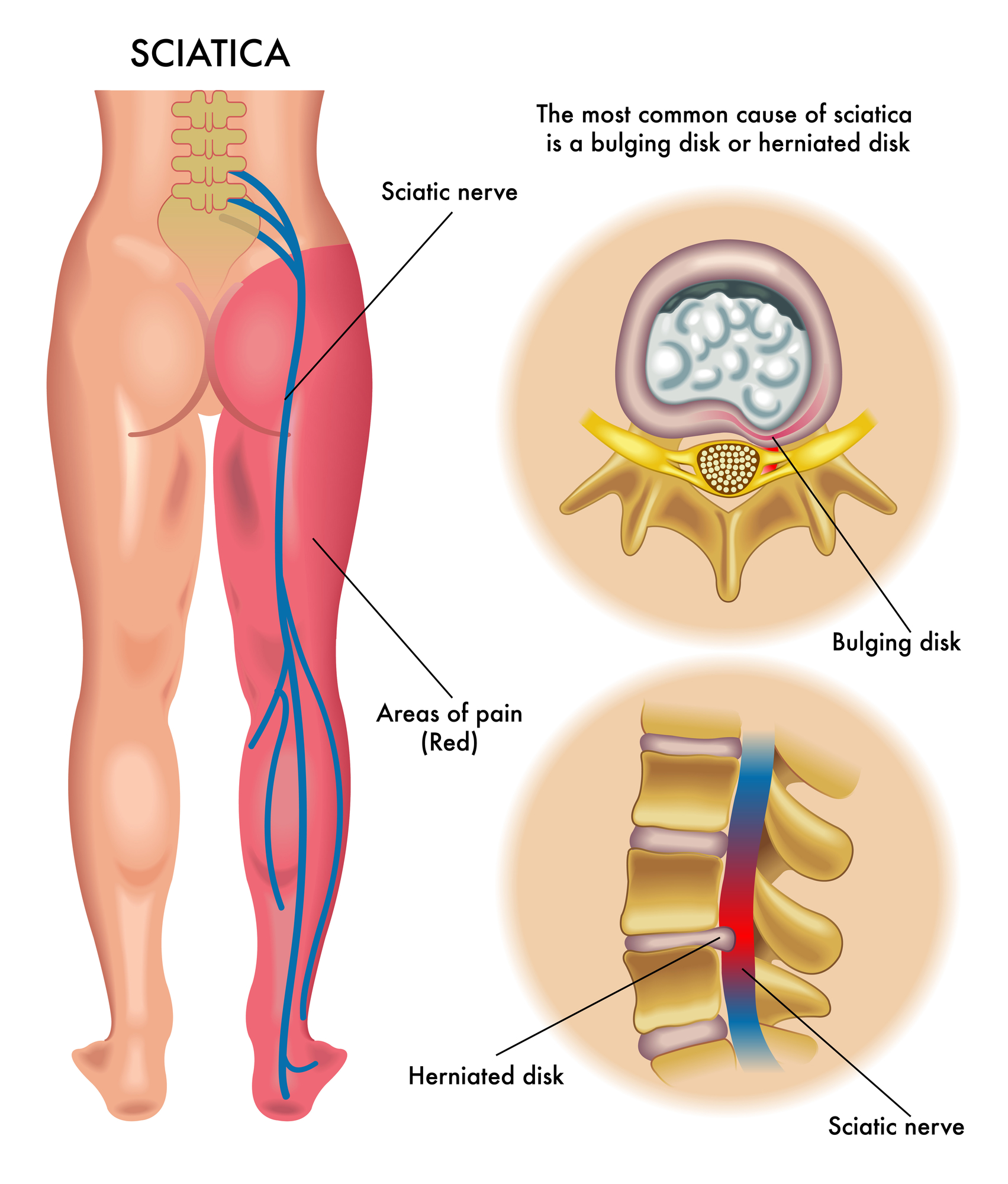
Don’t Know if it’s Sciatica?
Symptoms Include:
- Consistent pain on one side of the leg or buttocks
- Elevated pain when sitting
- Pain in the legs that can be described as tingling, searing, or burning
- Feelings of weakness, numbness or difficulty in moving leg or foot
- Sharp pain inhibiting the ability to stand or walk
Find a Treatment
For a complete diagnosis and treatment of sciatica, come see us at Central Orthopedic Group. We have two convenient locations on Long Island, in Plainview and Rockville Centre.
Click Below to Contact Us!
What is Sciatica?
Sciatica occurs when the sciatic nerve, which is the largest nerve in the body, is compressed or pinched. Sciatic nerve roots are located on either side of the lower spine and run through the buttocks, along the entire length of each leg and end in the foot. Therefore sciatica symptoms can include everything from leg pain, numbness, tingling, weakness and foot pain, depending on where the nerve has been irritated. The team of physicians at The Central Orthopedic Group recognize that the pain spectrum for sciatica can vary, as a sciatic episode can be infrequent and slightly irritating or it can occur often and be intolerable and incapacitating.
Why Does it Happen?
Sciatica is most commonly caused by a herniated disk, which is when a disk develops a tear or crack and bulges into the spinal canal, causing the sciatic nerve to be pinched. Other common causes include degenerative disc disease, which occurs when naturally aging lower back discs also happen to irritate nerve roots, or piriformis syndrome, when the sciatic nerve becomes irritated underneath the piriformis muscle in the buttocks. Less common causes include pregnancy or muscle strain. Typically the symptoms will clear up within 6 weeks, but in some cases, the pain can be prolonged and debilitating. Regardless of how long symptoms have been present, it is recommended that you consult with a medical professional, such as the associates at The Central Orthopedic Group, as soon as possible.
Treatments for Sciatic Nerve Pain
1. Yoga:
Gentle yoga can be very beneficial to those that suffer from sciatica, as it improves flexibility and strengthens the muscles and posture of the spine.
2. Ice or Heat Treatment:
These treatments are great for sciatic pain, as ice can reduce inflammation and numb sore tissues, while heat can increase oxygen flow and promote healing. Want to know more about the benefits of ice and heat therapy? Check out this blog post.
3. Steroid Injection:
If your sciatic pain lasts longer than a month, and other treatments just aren’t helping, your next step might be steroid injections. The Central Orthopedic Group offers injections that will reduce inflammation within the sciatic nerve.
4. Physical Therapy:
Nothing increases sciatic nerve pain like being stationary. While staying in bed seems like a good idea, in actuality exercise is the best choice as increased blood flow to the nerve and disks will reduce inflammation. A physical therapist at The Central Orthopedic Group will be able to prescribe appropriate stretching routines that will promote healing and reduce further injury.
5. Surgical Procedure:
If your sciatic pain persists beyond a 4 to 6 week time period, then you may be a candidate for surgery.

